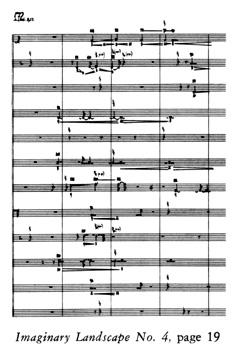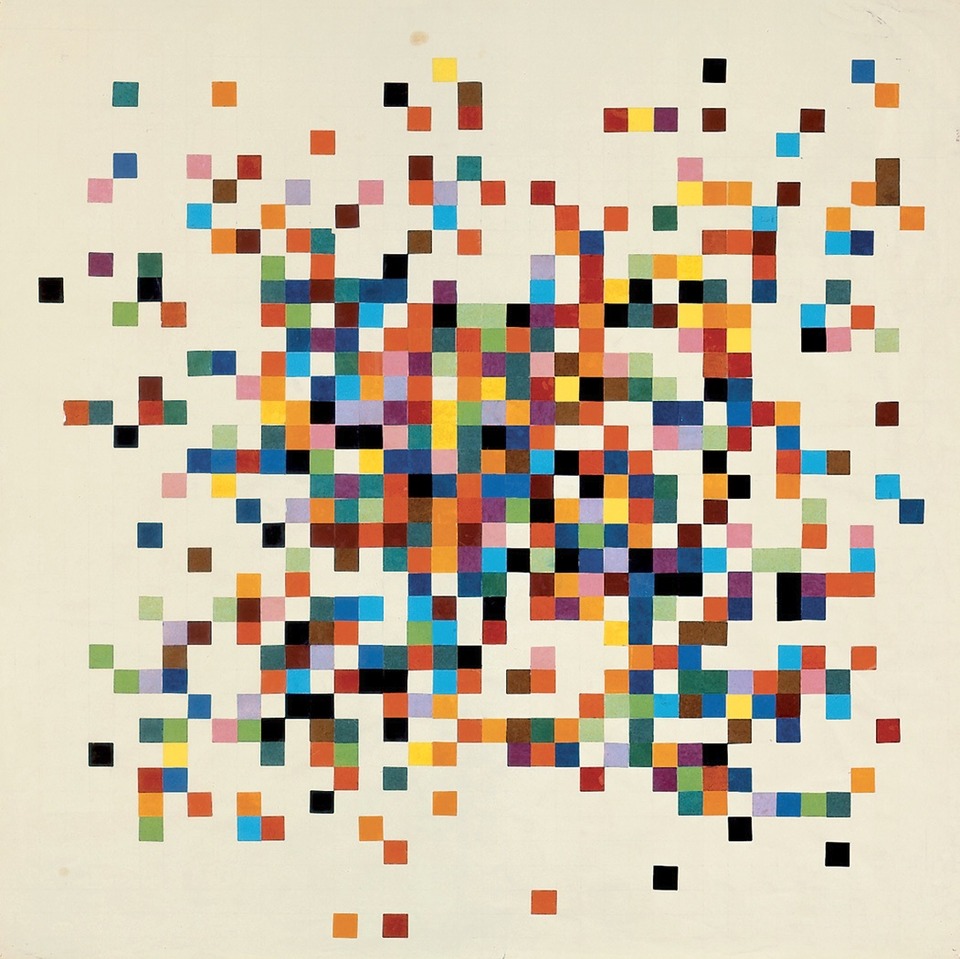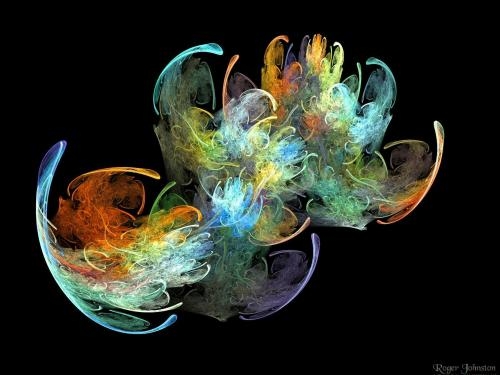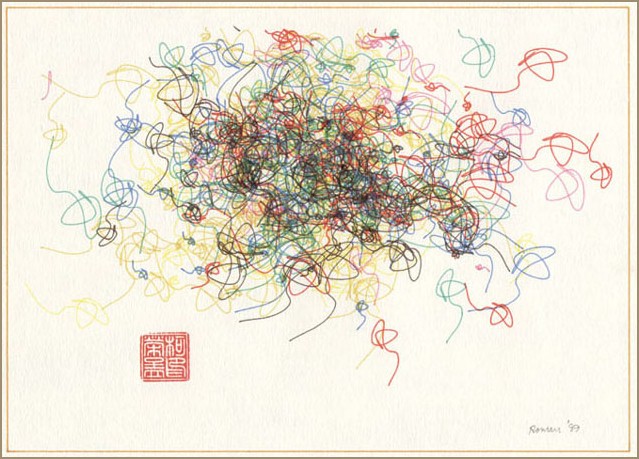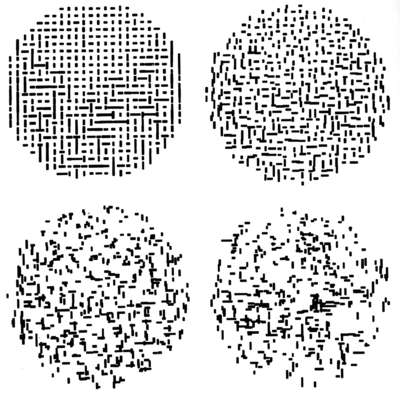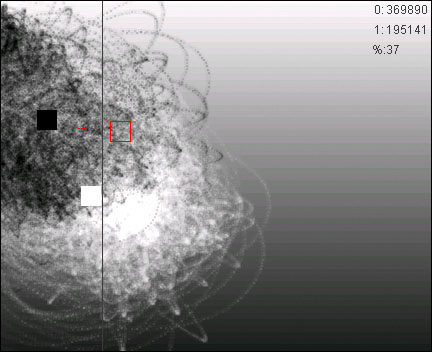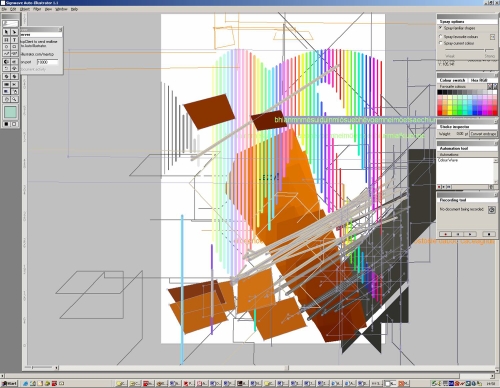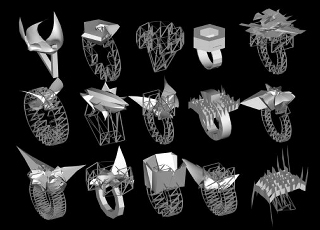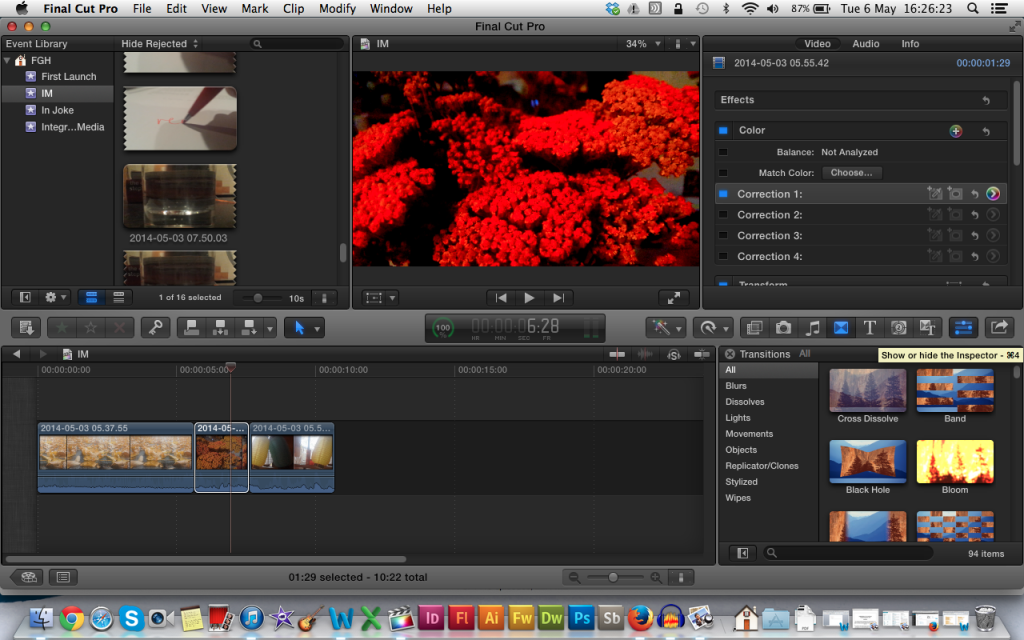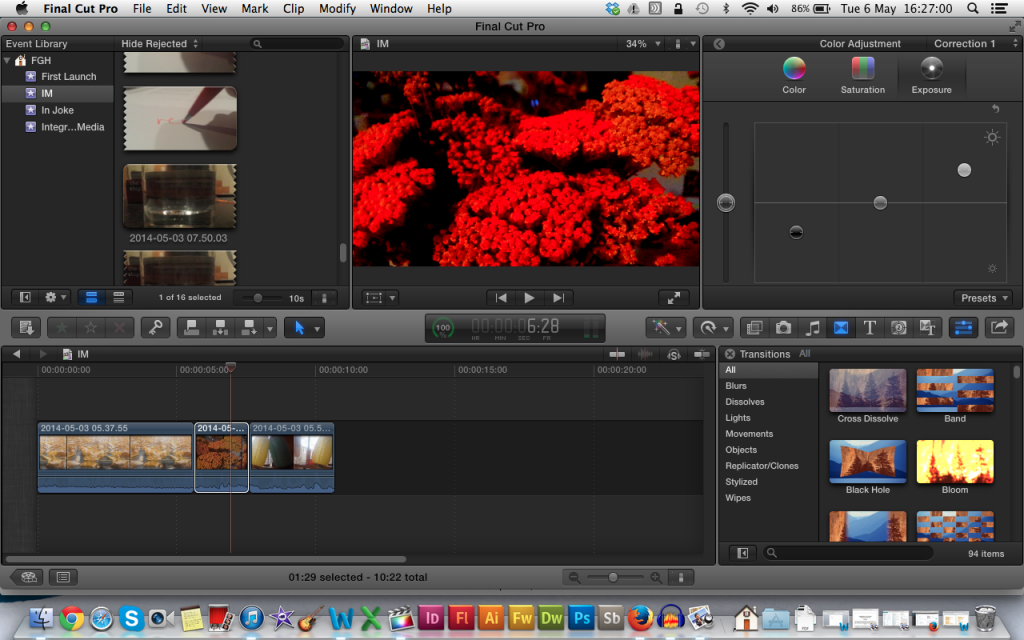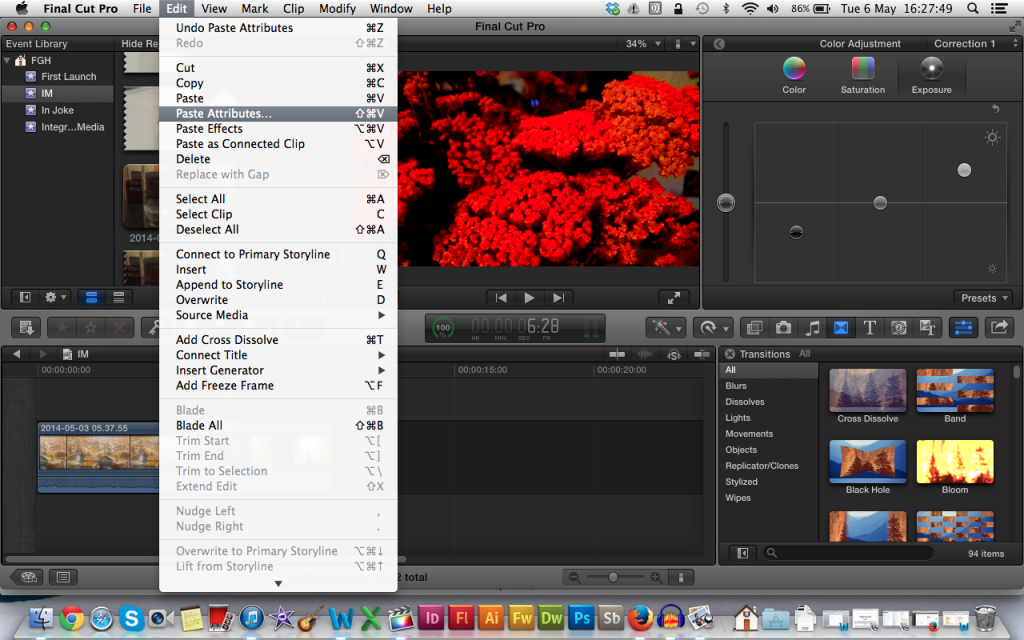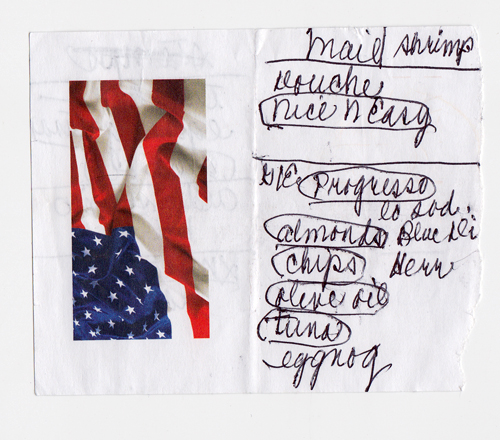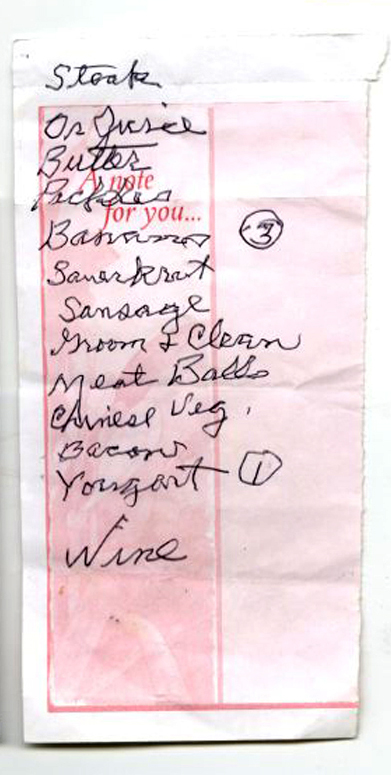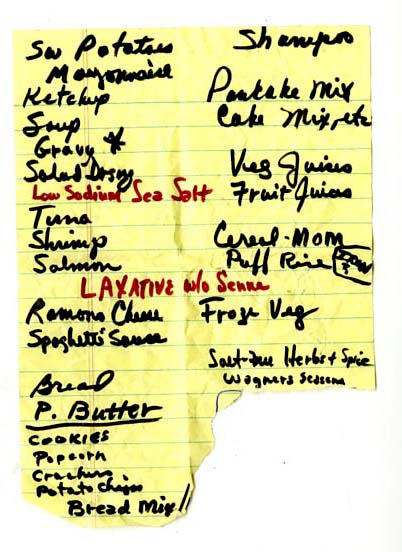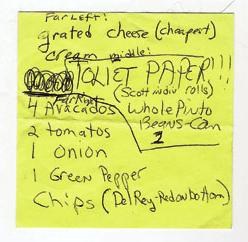1.
They had backed up another cage into the entrance. In the far corner a man, from behind one of the plank shelters, attracted the bull, and while the bull was facing away the gate was pulled up and a second bull came out into the corral.
He charged straight for the steers and two men ran out from behind the planks and shouted, to turn him. He did not change his direction and the men shouted: “Hah! Hah! Toro!” and waved their arms; the two steers turned sideways to take the shock, and the bull drove into one of the steers.
“Don’t look,” I said to Brett. She was watching, fascinated.
2.
Then I started to tear up the sheets and scatter the bits over the floor, and this writer moodge went sort of bezoomny and made for me with his zoobies clenched and showing yellow and his nails ready for me like claws. So that was old Dim’s cue and he went grinning and going ere r and a a a for this veck’s dithering rot, crack, crack, first left fistie then right, so that our dear old droog the red- red vino on tap and the same in all places, like it’s put out by the same big firm- started to pour and spot the nice clean carpet and the bits of his book that I was still ripping away at, razrez, razrez.
3.
Falling in love, we said; I fell for him. We were falling women. We believed in it, this downward motion: so lovely, like flying, and yet at the same time so dire, so extreme, so unlikely. God is love, they once said, but we reversed that, and love, like heaven, was always just around the corner. The more difficult it was to love the particular man beside us, the more we believed in Love, abstract and total. We were waiting, always, for the incarnation. That word, made flesh.
And sometimes it happened, for a time. That kind of love comes and goes and is hard to remember afterwards, like pain. You would look at the man one day and you would think, I loved you, and the tense would be past, and you would be filled with a sense of wonder, because it was such an amazing and precarious and dumb thing to have done; and you would know too why your friends had been evasive about it, at the time.
There is a good deal of comfort, now, in remembering this.
4.
But what after all is one night? A short space, especially when the darkness dims so soon, and so soon a bird sings, a cock crows, or a faint green quickens, like a turning leaf, in the hollow of the wave. Night, however, succeeds to night. The winter holds a pack of them in store and deals them equally, they darken. Some of them hold aloft clear planets, plates of brightness. The autumn trees, ravaged as they are, take on the flash of tattered flags kindling in the gloom of cool cathedral caves where gold letters on marble pages describe death in battle and how bones bleach and burn far away in Indian sands. The autumn trees gleam in the yellow moonlight, in the light of harvest moons, the light which mellows the energy of labour, and smooths the stubble, and brings the wave lapping blue to the shore.
5.
If you really want to hear about it, the first thing you’ll probably want to know is where I was born, and what my lousy childhood was like, and how my parents were occupied and all before they had me, and all that David Copperfield kind of crap, but I don’t feel like going into it, if you want to know the truth. In the first place, that stuff bores me, and in the second place, my parents would have about two hemorrhages apiece if I told anything pretty personal about them. They’re quite touchy about anything like that, especially my father. They’re nice and all — I’m not saying that — but they’re also touchy as hell. Besides, I’m not going to tell you my whole goddam autobiography or anything. I’ll just tell you about this madman stuff that happened to me around last Christmas just before I got pretty run-down and had to come out here and take it easy.
6.
It was a bright cold day in April, and the clocks were striking thirteen. Winston Smith, his chin nuzzled into his breast in an effort to escape the vile wind, slipped quickly through the glass doors of Victory Mansions, though not quickly enough to prevent a swirl of gritty dust from entering along with him.
7.
You never really understand a person until you consider things from his point of view . . . until you climb into his skin and walk around in it.
8.
We had been everywhere. We had really seen nothing. And I catch myself thinking today that our long journey had only defiled with a sinuous trail of slime the lovely, trustful, dreamy, enormous country, that, by then, in retrospect, was no more than a collection of dog-eared maps, ruined tour books, old tires and her sobs in the night—every night, every night—the moment I feigned sleep.
9.
Her face was sad and lovely with bright things in it, bright eyes and a bright passionate mouth, but there was an excitement in her voice that men who had cared for her found difficult to forget: a singing compulsion, a whispered “Listen,” a promise that she had done gay, exciting things just a while since and that there were gay, exciting things hovering in the next hour.
10.
It is better to be feared than loved.
